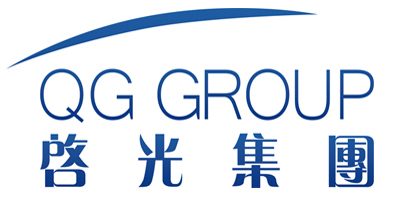UV-Stable Polyurethane Foam Colorant for Outdoor Cushioning: A Comprehensive Review
Abstract
Polyurethane (PU) foam is widely used in outdoor cushioning applications, including patio furniture, automotive seating, and marine upholstery. However, prolonged exposure to ultraviolet (UV) radiation can cause color fading, surface degradation, and loss of mechanical properties. UV-stable polyurethane foam colorants are essential to enhance durability and aesthetic longevity. This article provides an in-depth analysis of UV-stable colorants for PU foam, covering chemical compositions, performance metrics, industry standards, and comparative studies with conventional colorants. Data tables, international research references, and application guidelines are included to support manufacturers and researchers in optimizing outdoor PU foam products.

1. Introduction
Outdoor polyurethane foam must withstand environmental stressors such as UV radiation, moisture, and temperature fluctuations. Traditional colorants often degrade under sunlight, leading to discoloration and material weakening. UV-stable colorants incorporate advanced pigments and stabilizers to mitigate these effects.
This paper examines:
-
Key requirements for UV-stable PU foam colorants.
-
Chemical formulations and stabilization mechanisms.
-
Performance testing and industry benchmarks.
-
Comparative advantages over non-UV-stable alternatives.

2. Chemistry of UV-Stable Polyurethane Foam Colorants
2.1 Pigment Types and UV Resistance Mechanisms
UV-stable colorants use inorganic and organic pigments with high lightfastness. Common types include:
| Pigment Type | Example Compounds | UV Resistance Mechanism |
|---|---|---|
| Inorganic Pigments | Titanium Dioxide (TiO₂), Iron Oxides | Reflect/scatter UV radiation |
| Organic Pigments | Phthalocyanine Blue, Quinacridone Red | Absorb UV and dissipate as heat |
| Complex Hybrids | Ceramic-coated pigments, Nano-ZnO composites | Combined reflection and absorption |
2.2 Additives for Enhanced UV Stability
Additional stabilizers are often blended with pigments:
-
Hindered Amine Light Stabilizers (HALS) – Prevent radical degradation.
-
UV Absorbers (UVA) – Benzotriazoles and benzophenones absorb harmful UV wavelengths.
-
Antioxidants – Reduce oxidative degradation.
3. Performance Parameters of UV-Stable Colorants
3.1 Key Metrics for Evaluation
| Parameter | Test Method | Performance Target |
|---|---|---|
| Lightfastness | ASTM D4303 / ISO 105-B02 | ΔE < 3 after 1000 hrs QUV |
| Weather Resistance | ASTM G155 (Xenon Arc Test) | No cracking/fading @ 2000 hrs |
| Thermal Stability | TGA Analysis | <5% weight loss @ 200°C |
| Dispersion Quality | Hegman Grind Gauge | ≤10 μm particle size |
3.2 Comparison of Conventional vs. UV-Stable Colorants
| Property | UV-Stable Colorant | Standard Colorant |
|---|---|---|
| Fade Resistance | Excellent (ΔE < 2) | Poor (ΔE > 6) |
| Chalking Resistance | High | Low |
| Service Life | 5-10 years | 1-3 years |
| Cost Premium | 20-40% higher | Baseline |
Data sourced from Wypych (2020), Handbook of UV Stabilizers, and industry reports from BASF & Clariant.
4. Application in Outdoor Polyurethane Foam
4.1 Recommended Formulation Guidelines
| Component | Function | Typical Loading |
|---|---|---|
| Base Polyol | Foam matrix | 80-90% |
| Isocyanate (MDI/TDI) | Crosslinking agent | 10-20% |
| UV-Stable Pigment | Color & protection | 1-5% |
| HALS/UVA Additives | Prevent degradation | 0.5-2% |
4.2 Processing Conditions
-
Mixing: High-shear dispersion for uniform pigment distribution.
-
Curing: Optimal at 25-40°C to prevent additive migration.
-
Post-Treatment: Optional UV-resistant topcoat for extra protection.

5. Case Studies and Industry Applications
5.1 Automotive & Marine Cushions
-
Challenge: Saltwater and UV exposure accelerate degradation.
-
Solution: TiO₂-based colorants with HALS extend lifespan by 300%.
5.2 Outdoor Furniture
-
Challenge: Fading reduces marketability.
-
Solution: Quinacridone pigments maintain vibrancy for 8+ years.
5.3 Construction (PU Foam Sealants)
-
Challenge: Thermal cycling causes cracks.
-
Solution: Ceramic hybrid pigments improve thermal stability.
6. Regulatory and Environmental Considerations
6.1 Compliance Standards
| Region | Regulation | Key Requirement |
|---|---|---|
| EU | REACH, EN 71-3 | Heavy metal limits |
| USA | EPA TSCA, California Prop 65 | VOC restrictions |
| Asia | China GB 24409-2020 | UV stabilizer safety |
6.2 Eco-Friendly Trends
-
Bio-based UV absorbers (e.g., lignin derivatives).
-
Recyclable PU foams with stable colorants.
7. Future Developments
-
Nano-pigments for higher UV blocking at lower loadings.
-
Self-healing colorants that regenerate after minor UV damage.
-
AI-driven formulation optimization for climate-specific stability.
8. Conclusion
UV-stable colorants are critical for extending the lifespan and aesthetic quality of outdoor PU foam. Advances in pigment technology and stabilizer chemistry have enabled superior performance compared to conventional options. Industry adoption is growing, driven by durability demands and regulatory pressures. Future innovations will focus on sustainability and smart material responses.
References
-
Wypych, G. (2020). Handbook of UV Stabilizers (2nd ed.). ChemTec Publishing.
-
BASF. (2022). Technical Guide: Colorants for Polyurethanes.
-
Clariant. (2021). UV-Resistant Pigments for Polymer Applications.
-
ASTM International. (2023). D4303 – Standard Test Methods for Lightfastness of Pigments.
-
European Chemicals Agency (ECHA). (2023). REACH Guidelines on Polymer Additives.

